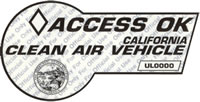
According to the Independent Insurance Agents of America, nearly 70 percent of college students have a car on campus these days.
And while these are often older "beater"cars, many parents feel safer sending their kids off to school in new, albeit lower-cost, models that promise solid overall reliability, good fuel economy and a full array of the latest safety features. Even better are cars that meet those criteria and return top resale values, so mom and dad can come out of the deal four years later with enough cash to put a down payment on a nice empty-nester's convertible.
To that end Forbes hit the books early and compiled the following list of best new cars in which to send a kid off to college.
Each of the models in the list features a base manufacturer's suggested retail price (MSRP) under $20,000, with at least one version in the model line that gets 35 or more mpg, according to the Environmental Protection Agency. All of them come standard with six airbags, antilock brakes and stability control for safety's sake, and receive above average ratings in the J.D. Power & Associates Initial Quality Study. Finally, all of the models listed here retain 40 percent or more of their original value after four years of ownership, according to projections from Automotive Lease Guide and other sources.
Three Honda vehicles made the Top 10 list:
Honda Fit
The subcompact four-door Fit could be the perfect campus cruiser - it gets 28-city/35-highway mpg, is reasonably priced, retains around 46 percent of its original value after four years and delivers sportier handling than most other cars in its class. A 1.5-liter four-cylinder engine makes the best use out of its 117 horsepower, particularly with the standard five-speed manual transmission. A five-speed automatic is optional, and it includes racecar-like steering wheel-mounted paddle shifters for quasi-manual operation. It's roomier on the inside than its diminutive exterior might otherwise indicate “ its tall-roofed hatchback design maximizes headroom“ and its rear-seat folds flat into the floor on a 60/40-split basis to create a generous 57.3 cu. ft. cargo hold. The standard audio system includes a USB input for connecting iPods and other devices. MSRP: $15,100 - $16,860.
Honda Civic
Released as early-2012 models, Honda redesigned its venerable Civic compacts with added style and substance in affordable coupe and sedan versions that are projected to retain as much as 52 percent of their original values after four years. An energetic 140-horsepower 1.8-liter four-cylinder engine teams with a five-speed automatic transmission in most models. A selectable "Eco Assist" driving mode affords top fuel efficiency at 28-city/39-highway mpg, with the HF version boasting a thrifty 41-mpg on the highway. Those who might be comfortable sending their son or daughter off to school with added performance at their command might consider either of the sporty Si models with a 201-horsepower 2.4-liter engine and six-speed manual gearbox. MSRP: $15,605 - $22,405.
Honda Insight
While at just over $18,800 it's one of the costliest cars in our list, the Insight is the lowest-priced gas/electric hybrid car in North America and can save a mobile student big money at the gas pump with an estimated 40-city/43-highway mpg. A 98-horsepower 1.3-liter four-cylinder gasoline engine teams with an electric motor/generator to power the front wheels via a gearless CVT automatic transmission. The engine can shut down select cylinders when not needed for greater fuel efficiency at highway speeds. While it's only moderately sporty, it does carry a certain techno-geek appeal and futuristic-looking aerodynamic styling. Its four-door hatchback configuration affords a roomy interior with a reasonably generous cargo hold. Expect to realize around a 41 percent residual value once a graduate moves on to the real world. MSRP: $18,200 - $21,490.
Contact DCH Honda of Temecula for more Honda vehicle information or to check them out in person.
http://blogs.forbes.com/jimgorzelany/2011/07/19/top-10-new-cars-for-college-kids/

 Honda is cleaning up its act.
Honda is cleaning up its act.

